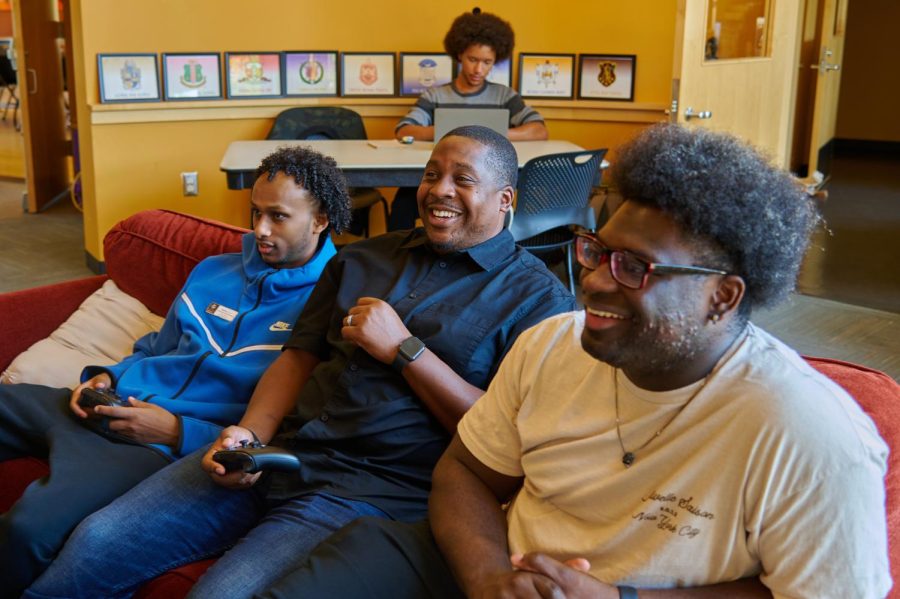“Just come in:” Lonnie B. Harris Black Cultural Center offers welcoming environment
Jamar Bean, the new Center Director at the Black Cultural Center, is pictured playing video games with some of the students who frequent the center on October 7, 2022. Jamal took over as the director in mid-September.
November 3, 2022
“When you come to the center, you’re at peace.”
For Zem Hussen, working at the Lonnie B. Harris Black Cultural Center is all about realizing your potential, surrounded by your community. She’s been involved with the center as a student volunteer for the last year, though she’s spent time within the walls of the center since she first stepped onto Oregon State University’s campus.
Gabi Prescott nodded her head while Hussen talked about what she loved about the center.
“It’s really easy to build community here.We all want the community feel. There’s only so many of us,” said Prescott, who is also a student volunteer.
For nearly 50 years, the center has provided a “home away from home” for Black students from all over the African diaspora, according to Jamar Bean, current center director.
“Students are continuing to fight for presence: having a space and a presence on campus,” Bean said.
In 1969, the fight for space from a Black OSU student and star football player created a legacy for students on the OSU campus to push back against the administration. OSU’s football coach kicked Fred Milton — who held a linebacker position — off the team, after demanding that Milton cut his hair.
Milton refused, sticking true to his claim that Coach Dee Andros was violating his human rights. On March 5, 1969, Milton and approximately 50 students who were enrolled in the Black Student Union, staged a walk-out.
The protest was recognized nationally and ignited a fire under OSU administration to listen to the needs of Black students on campus, though not immediately. Many students involved received withdrawal slips and were barred from registering for the next academic term.
Following the tumultuous year, the Office of Minority Affairs at OSU made its debut. Three years later, a cultural center opened for Black, brown and Indigenous students.
On April 26, 1975, BSU had a cultural center to call their own.
“Black students want to make sure that they have a space where they can be authentically them: authentically Black, authentically themselves — given the different identities we have within the Black-African diaspora… and that people understand that there is a difference,” Bean said, while talking about what still resonates with the center’s origin story.
“Black people are not monolithic,” Bean added.
Now, in 2022, the LBHCC is a dominant presence, facilitating events and gatherings that allow for the small population of Black students on campus to find their way to each other.
Black Connect, an annual welcome event in the early fall term, saw over 100 students in attendance — an unexpected amount, according to Bean. Prescott and Hussen both mentioned this event as one of their favorite events of the year.
Black Connect is one of four major events throughout the year, each typically geared towards celebrating Black excellence and culture. Despite the popularity of the events, Prescott and Hussen said that sometimes just being in the center is enough.
“It’s just a place where people can communicate and see other people that look like them and be themselves,” Hussen said.
With a gaming center, study rooms and areas to sit and hang out, the two volunteers describe the center as “energetic.”
For students who are nervous to go into the center, Prescott has three words to say:
“Just come in.”






